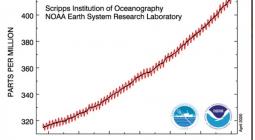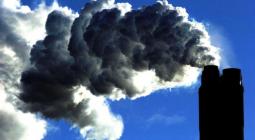ASK SARA: 'How much will it cost to slow climate change?'

When you account for the advantages to our health, the benefits of phasing out fossil fuels far outweigh the price.
Hi Sara,
As a broadcast meteorologist, one of the most common questions I’m asked is the hardest one for me to answer!
Some of my colleagues and friends understand that human-caused global warming is happening, but they don’t view it as a priority to address and combat it. They say things like, “I can’t afford to pay for wind and solar energy,” and they’re turned off by the phrase “climate emergency,” viewing it as alarmist. So my question is, how can I concisely say that it’s not only imperative to address climate change now, but it’s not going to bankrupt us to do it?
– Curious Meteorologist
Dear Curious Meteorologist,
First, a big thank you to you for your efforts to help the public understand climate change and the potential solutions.
I shared your questions with Susan Joy Hassol, an author and climate change communicator who served as senior science writer on three National Climate Assessments, which are layperson-friendly reports about climate change in the United States. I also got in touch with Kenton Gewecke, chief meteorologist at KOMU-TV in Columbia, Missouri, who hosts an ongoing series called “Show Me Climate,” that covers the science of climate change and the effects of climate change in Missouri. Both had suggestions:
1. Share up-to-date facts about the price of wind and solar energy
For many decades, producing electricity from renewable sources was expensive. So it’s understandable that your colleagues and friends would express concern about the costs. You can make them aware that for utilities, the price of producing electricity from renewable sources has plunged dramatically, rewriting old assumptions about how to tackle the climate problem. In fact, between 2010 and 2019, the cost of offshore wind fell by 29%, onshore wind by 40%, and utility-scale solar photovoltaics by an astonishing 82%, according to the International Renewable Energy Association.
“Things changed really, really fast,” Hassol said. “It’s really important that people understand this, because you have to always be updating your information.”
2. Let people know that renewables are undercutting coal
Because capturing energy from the sun and wind has gotten so cheap, it’s now more cost-effective in some cases for utilities to build renewable energy capacity than to construct power plants that run on fossil fuels. That in itself is a big deal, because it means that it can be less expensive to build climate-friendly infrastructure than it is to construct new fossil-fuel plants that will release planet-warming pollution for decades to come.
What’s more, in some places, it would be better for utilities’ bottom line to demolish existing coal-fired power plants and build new solar photovoltaic farms in their place. By next year, as much as 1,200 gigawatts of already-built coal capacity will be more expensive to run than it would be to construct brand-new utility-scale photovoltaics, according to the International Renewable Energy Agency.
Many utilities have converted their power plants from coal to cheaper natural gas, which is largely composed of climate-warming methane. But some experts think renewables plus battery storage — which the National Renewable Energy Laboratory forecasts will drop in price — could also beat gas on price in the not-so-distant future. If that happens, it would make gas plants and pipelines risky investments.
In fact, an October 2020 report from the Applied Economics Clinic and the Institute for Energy Economics and Financial Analysis warned of increasing uncertainty about the financial viability of new gas projects in the Pennsylvania-New Jersey-Maryland region.
3. Bring the benefits into view
People sometimes focus on the costs of converting our energy system from fossil fuels to renewable energy. But it’s important to conduct a thorough cost-benefit analysis, Hassol said.
“When you do that analysis, it’s very clear that everything we have to do to transition to clean energy will not only improve our climate situation and avoid further worsening of extreme weather and so forth,” she said, “it will be good for us for so many other reasons that we would do it even if climate change wasn’t a problem.”
One major benefit is improving our health. In addition to carbon pollution, burning fossil fuels releases other air pollutants such as mercury, nitrogen oxides, sulfur dioxide, and soot. Those pollutants contribute to heart and lung diseases, leading to nearly 250,000 premature deaths in the U.S. each year, according to recent U.S. House testimony by Drew Shindell, a professor at Duke University’s Nicholas School of the Environment.
Shindell testified that phasing out fossil fuels during the next 50 years would amount to “over $700 billion per year in benefits to the U.S. from improved health and labor alone, far more than the cost of the energy transition.”
4. Explain that yes, climate change is an urgent problem
Two forms of inertia make climate change urgent, Hassol pointed out. The first is inertia in our planet’s climate system. Once carbon dioxide, the main climate-warming gas, is added to the atmosphere, it remains there for generations — 300 to 1,000 years. That means any carbon dioxide we release today will keep heating up the Earth for a long, long time.
The other form of inertia is in our energy system. “When you build a power plant, you’re going to want to use it for a long time — 50 years, maybe.” Hassol said. “Every time we make an investment in new fossil-fuel infrastructure, we’re extending into the future our dependence on fossil fuels and the impact of those on the climate system. So we need to start. It’s urgent because we need to make decisions now that are going to affect us later.”
Curious Meteorologist, lean into your authority as a broadcast meteorologist to explain the connection between extreme weather and the urgency of climate change. Already, the U.S. is experiencing record numbers of disasters, such as wildfires, droughts, and hurricanes, that cause damage of $1 billion or more, according to NOAA. Scientists have determined that climate change played a role in dozens of extreme weather events; explore this map from Carbon Brief for examples. If we do nothing to slow the warming of the planet, such disasters are likely to grow more frequent and severe.
Remind your colleagues and friends that the future is still up to us: “If we really, drastically lower our emissions, we’ll get a little more warming,” Hassol said. “And if we continue on the path we’re on, we’re going to get a lot more warming, and it’s going to be catastrophic. And the choice is ours.”
5. Everyone can help
You can help slow climate change no matter your budget, said Gewecke, the Missouri meteorologist.
In his “Show Me Climate” series, Gewecke helps viewers understand how they can address the problem.
“If you can’t afford some of the advances in technology — purchasing renewable energy or an electric or hybrid vehicle — then do what you can,” he told me.
You can support local farmers, compost food waste, take shorter showers, install energy-efficient light bulbs, and work to reduce waste at home, he said.
An introduction to the state of solar power in the U.S.
“It is also important to talk about this with your family and friends. When people see change and realize it is a good thing that is doable, they’ll also be more willing to make changes. It is also important to make sure your elected officials know you want renewable energy to be more abundant,” he said. “We can all do something.”
Good luck and let me know how it goes.
— Sara
14 December 2020
YALE




